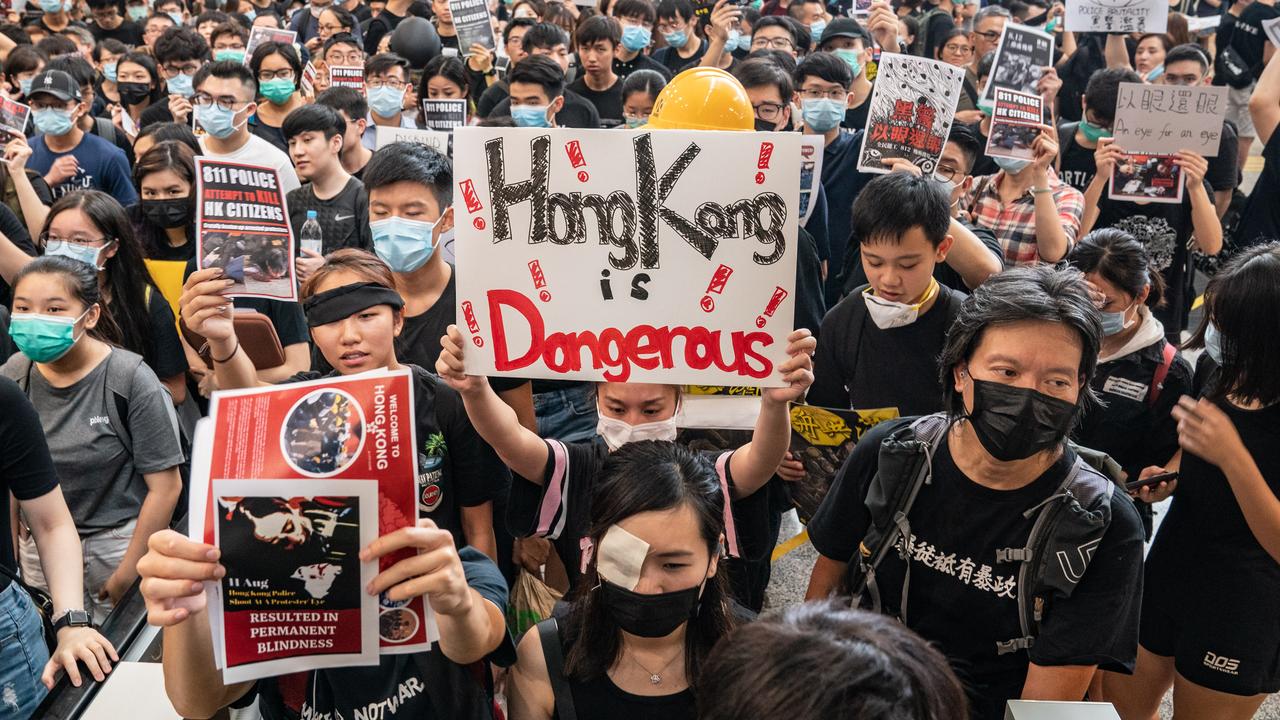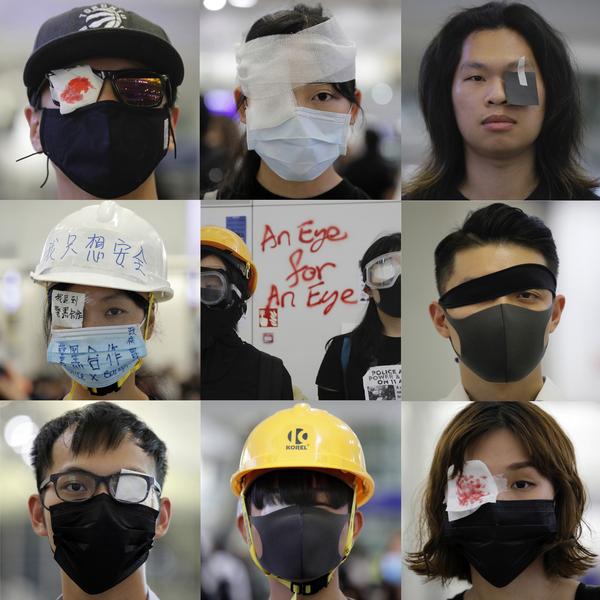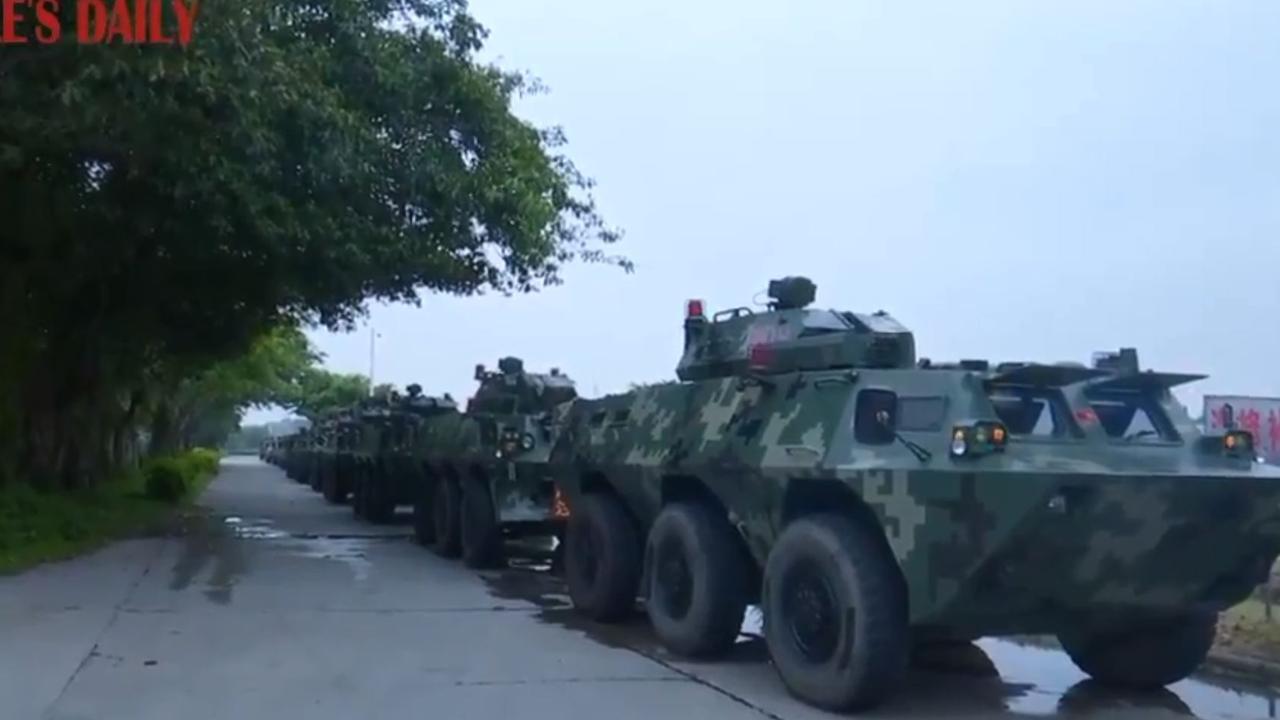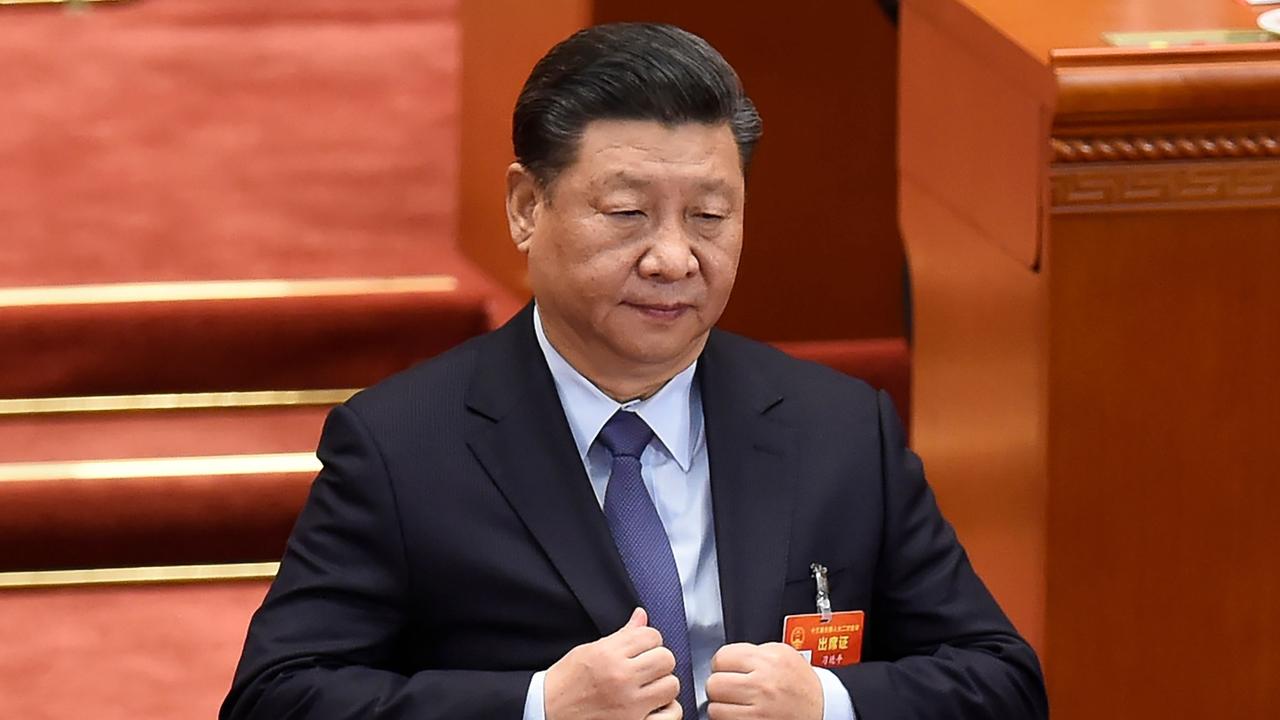How China is weaponising its propaganda-machine media to bring down Hong Kong protesters
The Chinese Government has a powerful tool for taking Hong Kong’s protests into its own hands — and the scariest part is how well it’s working.
Over the past few months, your news feed has no doubt been flooded with footage from Hong Kong’s massive pro-democracy protests.
Hundreds of thousands of people are continuing to take to the streets each weekend as a powerful symbolic rejection of mainland China’s increasing reach.
Only those residing in the mainland aren’t getting this side of the story. At first, they were barely seeing anything about the demonstrations. Now, the only picture being presented to them is one of violent thugs lashing out at authority figures, and showing unwarranted disrespect to a benevolent Beijing.
In other words, the one thing China initially kept away from the Hong Kong protests is now its biggest weapon — its state media.
RELATED: Hong Kong protesters flood city streets
It’s a careful tactic by an authoritarian government seeking to take control of an increasingly uncontrollable situation.
“The Chinese Government is trying to weaponise the protests. Rather than trying to completely hide them from the Chinese people they’re employing tactics to highlight violence and say these are ‘terrorists’ working at the beheadst of foreign governments, like the US,” Dr Malcolm Davis, a senior analyst at the Australian Strategic Policy Institute, told news.com.au.
“They’re trying to shape the narrative to their needs.”
And it could reach a bloody end point.
HOW CHINA IS USING FAKE NEWS AS A WEAPON
When the Hong Kong protests started, China’s state media was largely silent. As far as its people were concerned, there was nothing worth mentioning taking place south of Shenzhen.
When the first major protests began on June 9, the Chinese Government sought to downplay it, with state media reports erroneously claiming the majority of people were rallying in defence of joining the mainland.
This is typical of the Xi Jinping-led government, which runs its own regulated version of the internet through a Great Firewall that blocks content it doesn’t want its citizens to see, including Facebook, Twitter, Instagram and various western news outlets.
At this time, the demonstrators were coming up with ingenious ways of forcing mainland citizens to digest their message, air-dropping memes and flyers in simplified Chinese to strangers at Kowloon’s popular metro stations frequented by mainland tourists.

But fast-forward 10 weeks, and the Xi Jinping-led government’s state media has embraced the protests, actively pushing footage and editorials distorting the events to send a message both to mainland residents and Chinese citizens abroad.
Their daily coverage routinely describes the protests as “riots”, and the protesters as “thugs” and “radicals”.
Any footage or events with angles that could lend sympathy or support to the mainland are amplified across China’s state media channels.
Take, for example, the Australian tourist who was filmed clashing with pro-democracy protesters after he missed his flight and was left stranded at the airport.
In western media and online, the man was derided as “trash” and “entitled” for degrading the protesters’ plight over something as trivial as a missed flight.
But nationalistic state media outlet The Global Times shared the video on Twitter as proof of foreigners defending the mainland over the Hong Kong protesters, stating that the protesters “got in the way” and that the defender “fought back”.
#HongKong protesters got in the way of a foreign tourist in #HK airport after all departures were canceled due to sit-in protests. The tourist fought back: "Hong Kong is a part of China!" "Go get a job!" #香港 pic.twitter.com/Ylso5Xykfx
— Global Times (@globaltimesnews) August 12, 2019
There are increasing instances of Chinese state media now posting out-and-out fake news about the demonstrations.
For example, one widely shared video on Weibo shows a female protester who lost an eye from a rubber bullet last weekend appearing to accept payment from other protesters, suggesting the incident was staged.
The woman accepting the cash in the video was not the same protester who lost an eye. Regardless, China’s state television network posted the video on its website, insinuating but stopping short of directly stating that the protesters were paid actors.

In another incident, a video appeared showing a protester with a toy weapon. The China Daily circulated it as erroneous evidence that the protesters were resorting to gun violence.
China’s coverage of the demonstrations aims to spark nationalistic fervour among readers — not just through criticising the protesters, but inspiring support for defenders of the mainland.
Earlier this week, Chinese state media effectively turned one of its reporters into an overnight sensation following his altercation with protesters.
Fu Guohao, a Global Times journalist, was tied up and assaulted after getting into an altercation with demonstrators at Hong Kong airport earlier this week.
According to Hong Kong Free Press, Fu was taking close-up photos of protesters. Throughout the movement, many protesters have gone to lengths to conceal their identities with face masks, goggles and umbrellas, fearing they will be tracked down by authorities.
When protesters asked him to show his press identification, he reportedly refused and tried to leave.
“He said in English that he was a tourist,” one protester later told reporters. “If he had co-operated and did not try to run away, I believe we would not have had such a big reaction.”
Photos and videos show black-clad protesters using cable ties to bind the man’s hands and legs. As he was being tied up, he said: “I support Hong Kong police. You may now beat me up.”

When mainland China got hold of the story, Fu became an overnight sensation. State media pushed the image of him as a pro-Beijing poster boy. The footage of his restraint spread across Chinese social media, and his expression of support for the Hong Kong police went viral.
China’s People’s Daily newspaper has praised Fu for his “manliness”, writing: “Let’s remember Fu Guohao and his awe-inspiring righteousness while being held. This is what a dignified and upright Chinese should be like.”
Long story short, if you’re a Chinese citizen right now, you’re getting sold a story about thuggish demonstrators hurling bricks at police officers and seeking to topple the system.
The “why” is deliberately hazy, even though the protesters have been transparent with their aims from the start; they want the permanent withdrawal of a controversial extradition bill, an independent investigation into police corruption, and reassurance that mainland China would let them enjoy their civil liberties and freedoms until 2047, as was initially agreed upon.
This is propaganda at its finest. And already, it seems to be making its mark.
HOW FAR WILL BEIJING GO TO STOP PROTESTS?
Experts say the shift in media coverage of the protests is the Government’s way of stirring up nationalistic support and while threatening the territory with a more drastic response from Beijing in the near future.
It appears to be having the desired effect. In the wake of the Fu incident, China’s popular microblogging platform Weibo was flooded with nationalistic comments from Chinese netizens.
“How many Chinese will have sleepless nights? Our state power should take action now!” said one.
“If no further measures are taken, both the central and Hong Kong governments will lose people’s hearts! Too much restraint amounts to connivance,” wrote another.
One even said they should be killed over the protests. “Beating them to a pulp is not enough,” the user wrote. “They must be beaten to death. Just send a few tanks over to clean them up.”


At the same time, China’s state media has published footage of large-scale exercises featuring the People’s Armed Police in Shenzhen, near the Hong Kong border. They also published footage of military trucks and tanks driving down a highway, purportedly towards the border.
Dr Malcolm Davis, a senior analyst at the Australian Strategic Policy Institute, says the Chinese media’s goal is ultimately to delegitimise the protest movement.
“The Chinese Government is trying to weaponise the protests. Rather than trying to completely hide them from the Chinese people they’re employing tactics to highlight violence and say these are ‘terrorists’ working at the beheadst of foreign governments, like the US,” he told news.com.au. “They’re trying to shape the narrative to their needs.”
He said the footage of trucks and Chinese soldiers, aired on Chinese state television, was designed to send a clear threat to the Hong Kong protesters.
“It’s sending a message of ‘We can crush you, this will be Tiananmen Part Two’. They’ve got the police ready to go. Their local military commander said they could be there in a matter of minutes.”

But for the next couple of months, at least, China’s military presence may be a case of smoke and mirrors.
Dr Davis says it’s likely Mr Xi will hold off until at least October 1st, which will mark the 70th anniversary of the founding of the People’s Republic of China.
In the lead-up to this milestone, Mr Xi has arranged for a massive display of military strength on Tiananmen Square. Deploying People’s Liberation Army troops to Hong Kong before that date would detract from this.
At the same time, China is facing a major economic crisis, and Hong Kong’s financial status in the world is crucial to the mainland staying afloat. Experts say an all-out invasion could have huge economic and political consequences for Beijing.
But Dr Davis notes Mr Xi will stand firm on his goal of bringing Hong Kong into the mainland.
“I guarantee you Xi Jinping will not allow this protest in Hong Kong to become a cradle of challenge to the central government. He will not accept Hong Kong slipping from his grasp, and if he gets a sense that that’s happening, he’ll act.”
He says it’s more likely Mr Xi would deploy Chinese police to support the Hong Kong police, but says the Government will do all it can to avoid sending in People’s Liberation Army troops.
“If the PLA go in we’ll have another Tiananmen massacre, and the Chinese Government wants to avoid that.”
In the meantime, the Hong Kong protesters are rallying on. Today marks the 11th consecutive week of protests — and they show little signs of slowing down.
WHY IS HONG KONG PROTESTING?
The Hong Kong people have been protesting for nearly three consecutive months.
The demonstrations started as a protest against a proposed extradition bill that would see criminal suspects sent to China, but have since become more widely about opposition to the mainland’s growing political influence overall.
When Hong Kong was handed over from Britain to China in 1997, it was agreed that the territory would be allowed to maintain its unique freedoms and civil liberties for the next 50 years — a deal the protesters believe has not been honoured by Beijing.
The protesters believe China has gradually been whittling away their liberties since the handover, including by suppressing the “Umbrella Movement” in 2014 and by kidnapping five Hong Kong booksellers.
With the ongoing protests, they are now pushing for the right to directly elect their own government, for an independent commission to investigate police brutality, and they want the territory’s leader, Carrie Lam — who was hand-picked by the Chinese Government — to resign.



